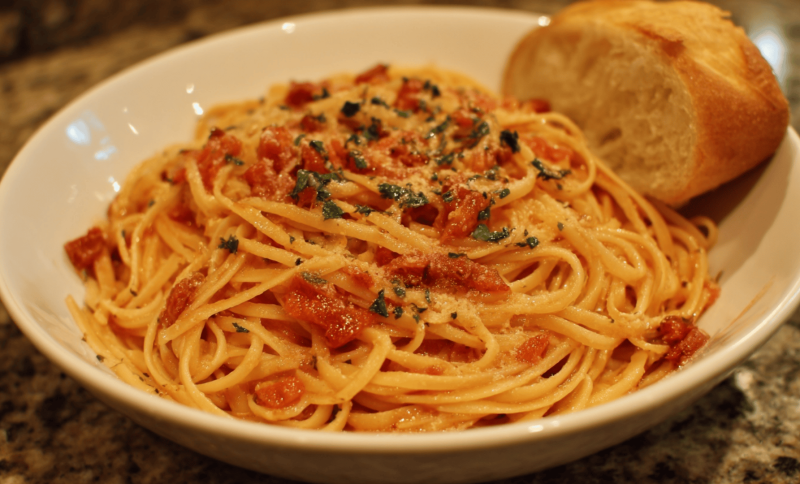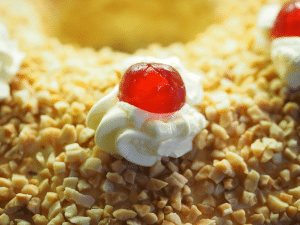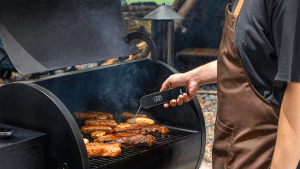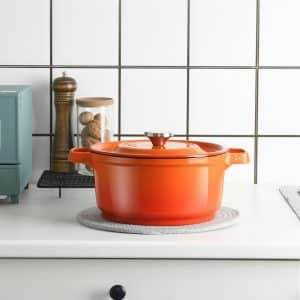Boiling pasta may seem easy, but a few simple techniques can upgrade it from average to amazing.
The difference between sticky, overcooked noodles and perfectly cooked ones comes down to water, timing, and seasoning.
Using the right amount of water, adding salt at the right moment, and knowing when to stop cooking all help create that’s firm, flavorful, and ready to hold any sauce beautifully.
With a little attention, you can make it taste just like it came from a restaurant, soft yet slightly firm, never soggy.
Follow the perfect steps, and you’ll get perfectly cooked every single time.
How to Boil Pasta With Al Dente Basics
Begin with a large pot filled with plenty of water, using about four to six quarts for every pound.
Bring it to a rolling boil over high heat until bubbles rise quickly and evenly across the surface.
Once the water is boiling, add 1 to 1.5 tablespoons of salt per quart to season the water from the inside. Add the all at once and stir well to keep them from sticking.
Let it cook at a steady boil and start tasting it a minute or two before it’s done.
Al dente means “to the tooth,” when pasta feels tender yet slightly firm with a tiny pale core, never hard or mushy.
Ingredients You’ll NeedMain Ingredients
Optional Additions
|
How to Cook Pasta for Sauced Dishes
Follow these easy steps to achieve a rich, balanced, and perfectly coated taste every single time.
Step 1: Cook to Al Dente
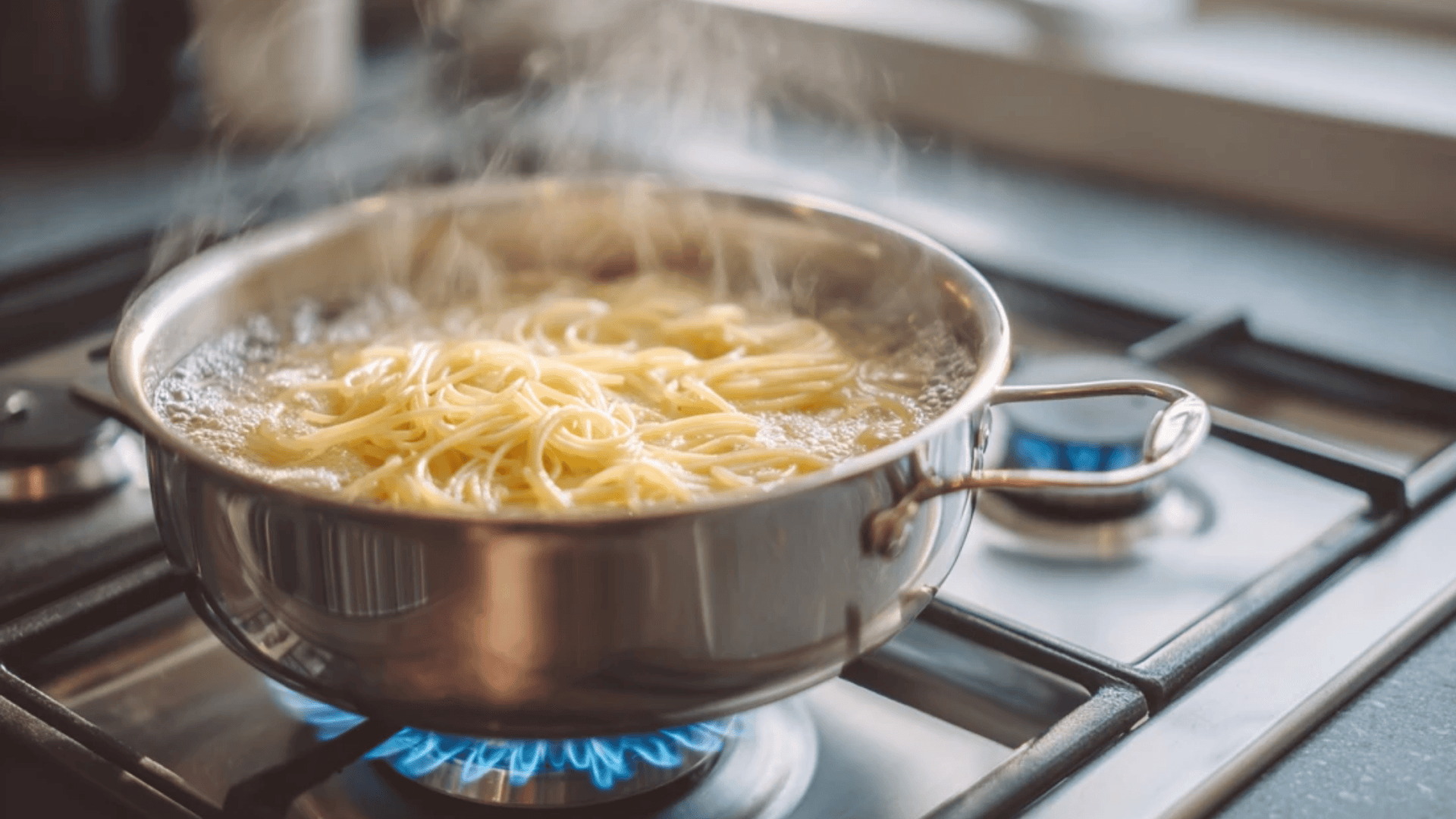
Boil the it in salted water until it’s just al dente, meaning tender with a slight bite in the center. Avoid overcooking, as the will continue to cook when added to the sauce.
This step ensures the noodles stay firm and absorb flavors beautifully when finished together.
Step 2: Save Leftover Water
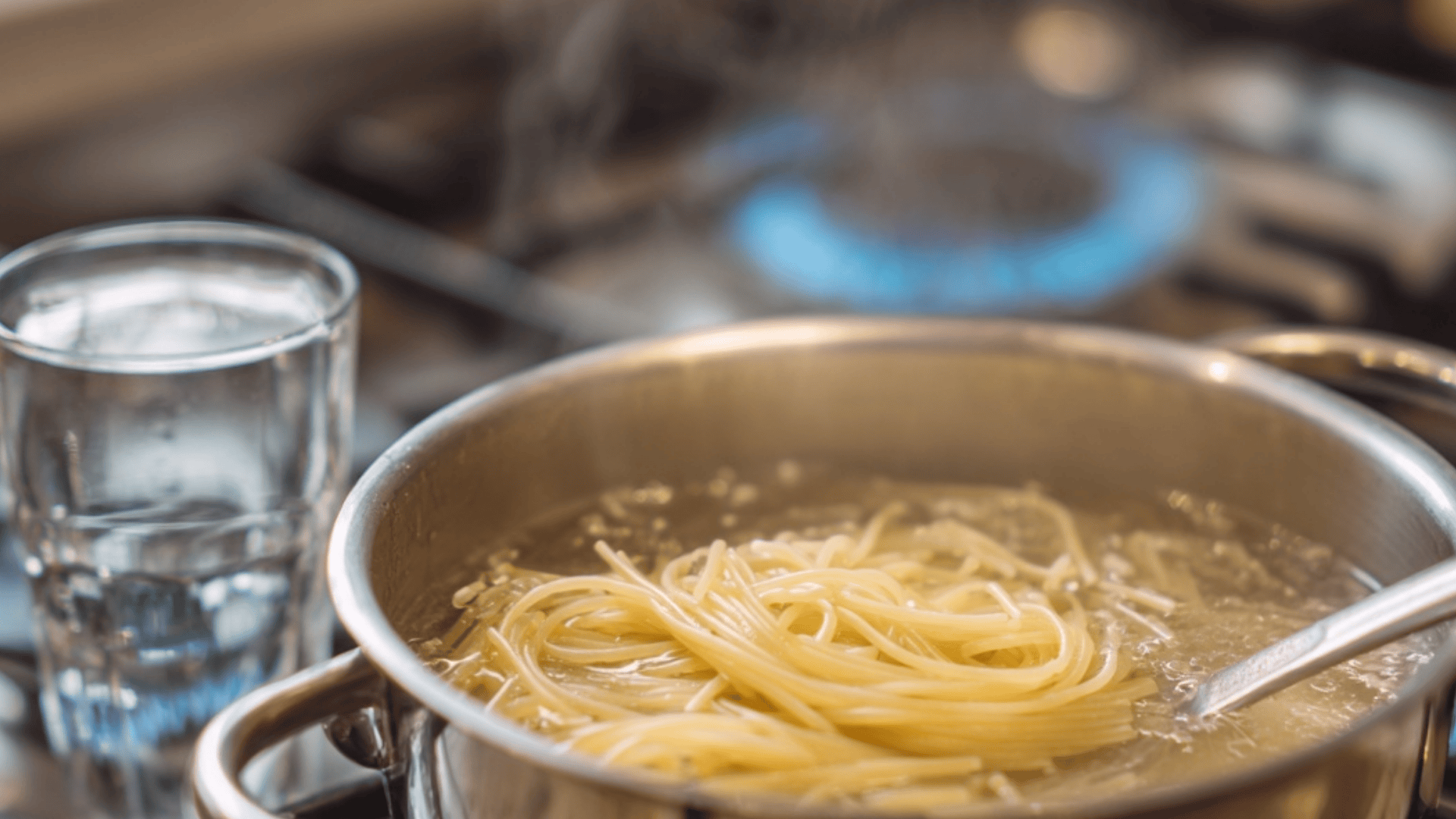
Before draining the it, reserve ½ to 1 cup of water using a heat-safe cup.
This starchy, salty liquid is the secret to creamy, cohesive sauces. It acts as a natural thickener, helping the sauce stick to the while balancing flavor and texture without needing extra oil or cream.
Step 3: Mix with Sauce
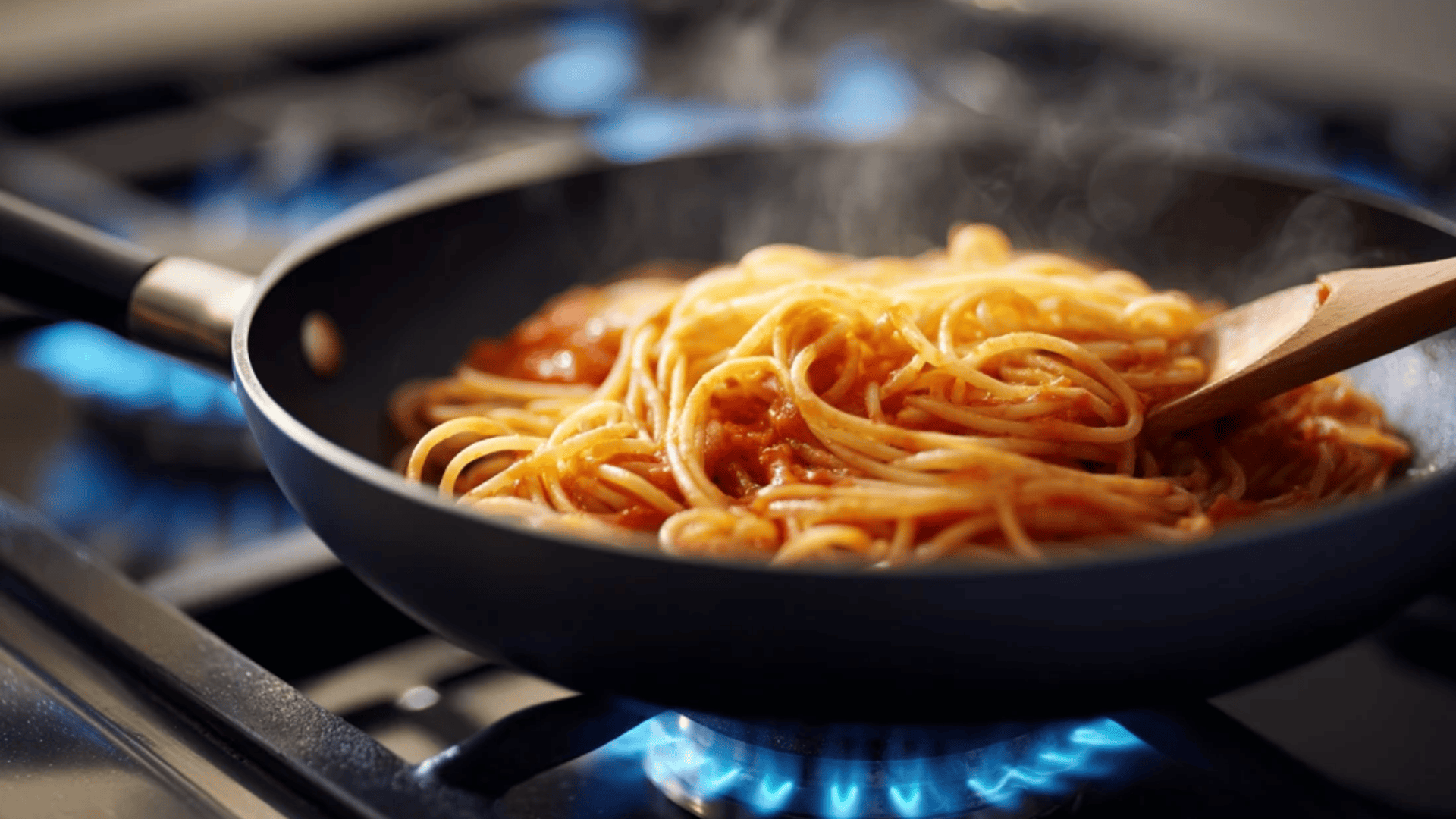
Transfer the hot directly into your prepared sauce using tongs or a slotted spoon. Skip rinsing; the starch left on the helps the sauce cling perfectly.
Toss the it gently to coat every strand, ensuring the flavors combine evenly and the texture stays silky and rich.
Tip: You can use sauces like tomato basil, creamy Alfredo, garlic butter, or pesto for the best flavor and smooth coatin
Step 4: Simmer for One to Two Minutes
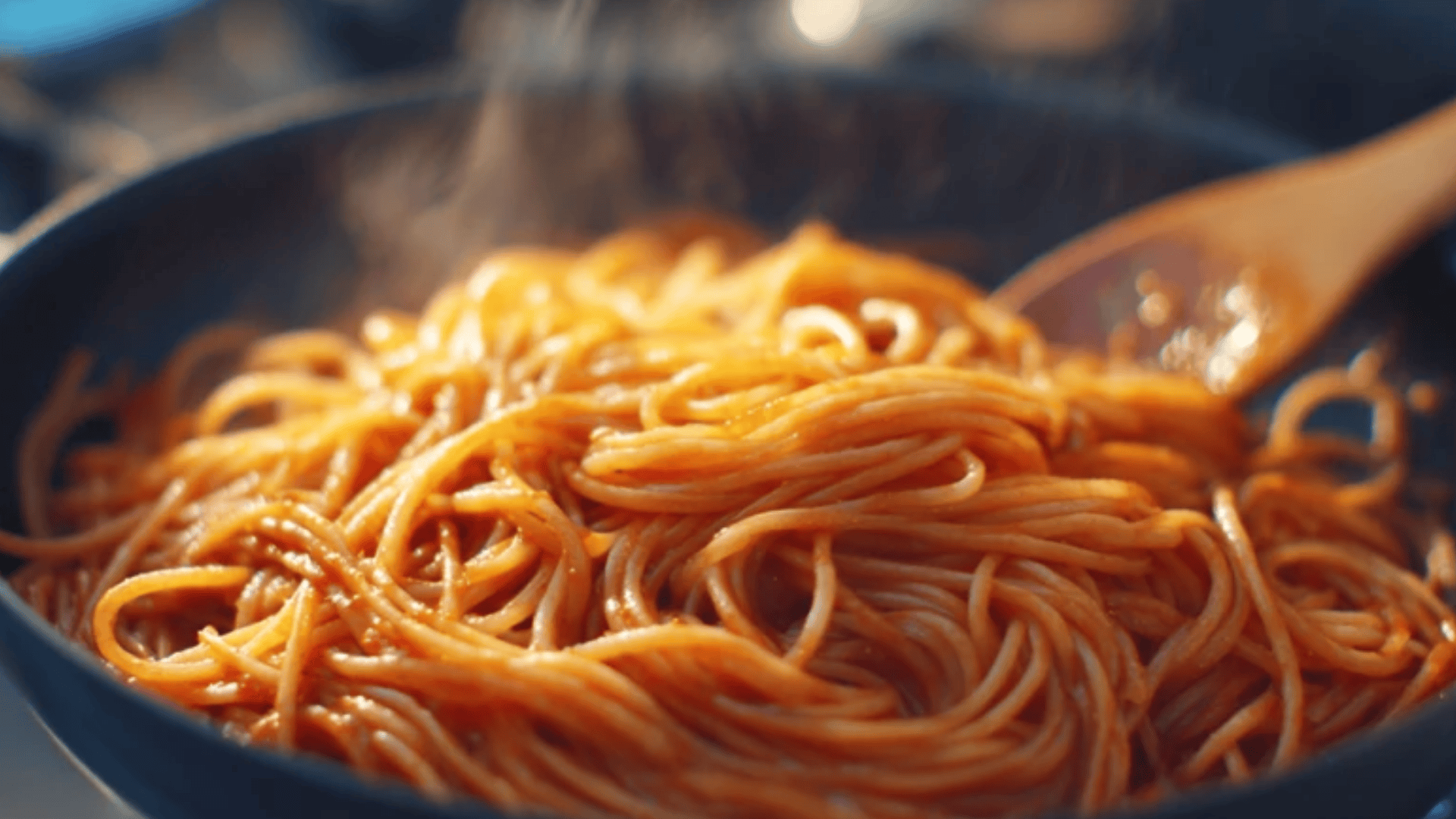
Let the it and sauce simmer together over low to medium heat for about 1 to 2 minutes. Stir occasionally so the noodles absorb flavor evenly.
This brief simmer allows the sauce to thicken naturally, creating a smooth, restaurant-quality coating on every piece.
Step 5: Adjust with Water
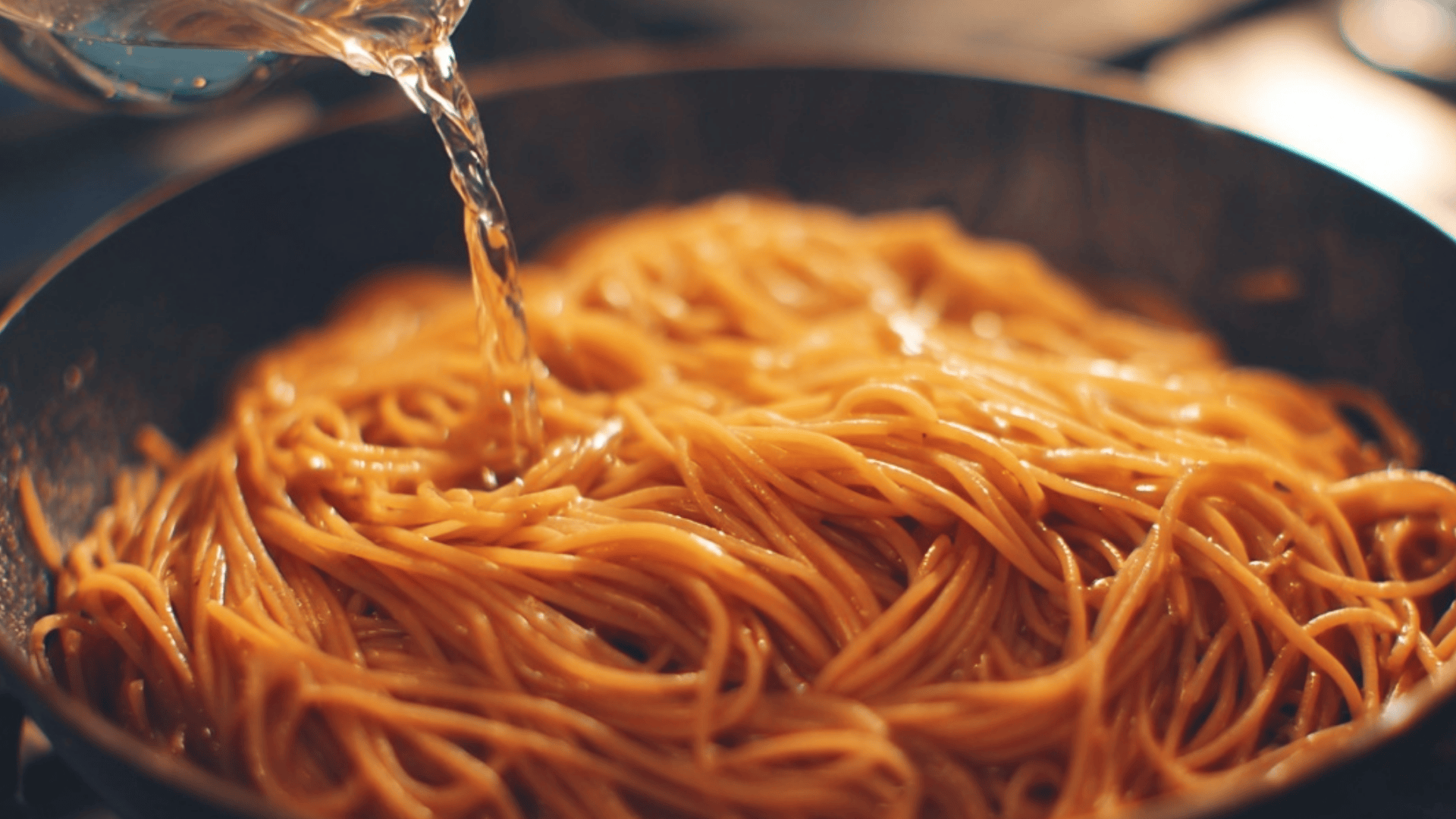
Gradually add small splashes of the reserved water to reach your desired consistency. The starch in the water binds with the sauce, giving it a glossy, velvety texture.
Keep stirring until the it is evenly coated, flavorful, and perfectly balanced, neither too dry nor too watery.
Al Dente Pasta Cooking Chart
Use this quick chart to find the perfect cooking time for different types and achieve that ideal al dente texture every time.
| Pasta Type | Typical Cooking Time | Al Dente Time | Notes |
|---|---|---|---|
| Spaghetti / Linguine | 8-12 min | 8-9 min | Start testing early |
| Penne / Rigatoni | 10-12 min | 9-10 min | Ideal for creamy sauces |
| Fusilli / Farfalle | 10-13 min | 9-11 min | Great for salads |
| Elbow Macaroni | 7-9 min | 6-8 min | Popular for mac and cheese |
| Rotini | 8-10 min | 6-8 min | Holds sauce well |
| Angel Hair | 4-6 min | 3-4 min | Very delicate, cooks fast |
| Fettuccine | 10-12 min | 9-11 min | Works well with Alfredo |
| Fresh Pasta | 2-5 min | 2-3 min | Cooks much faster |
| Whole Wheat | 9-12 min | 8-10 min | Slightly firmer texture |
Note: Always check package directions and taste test frequently.
How to Cook it for Salad
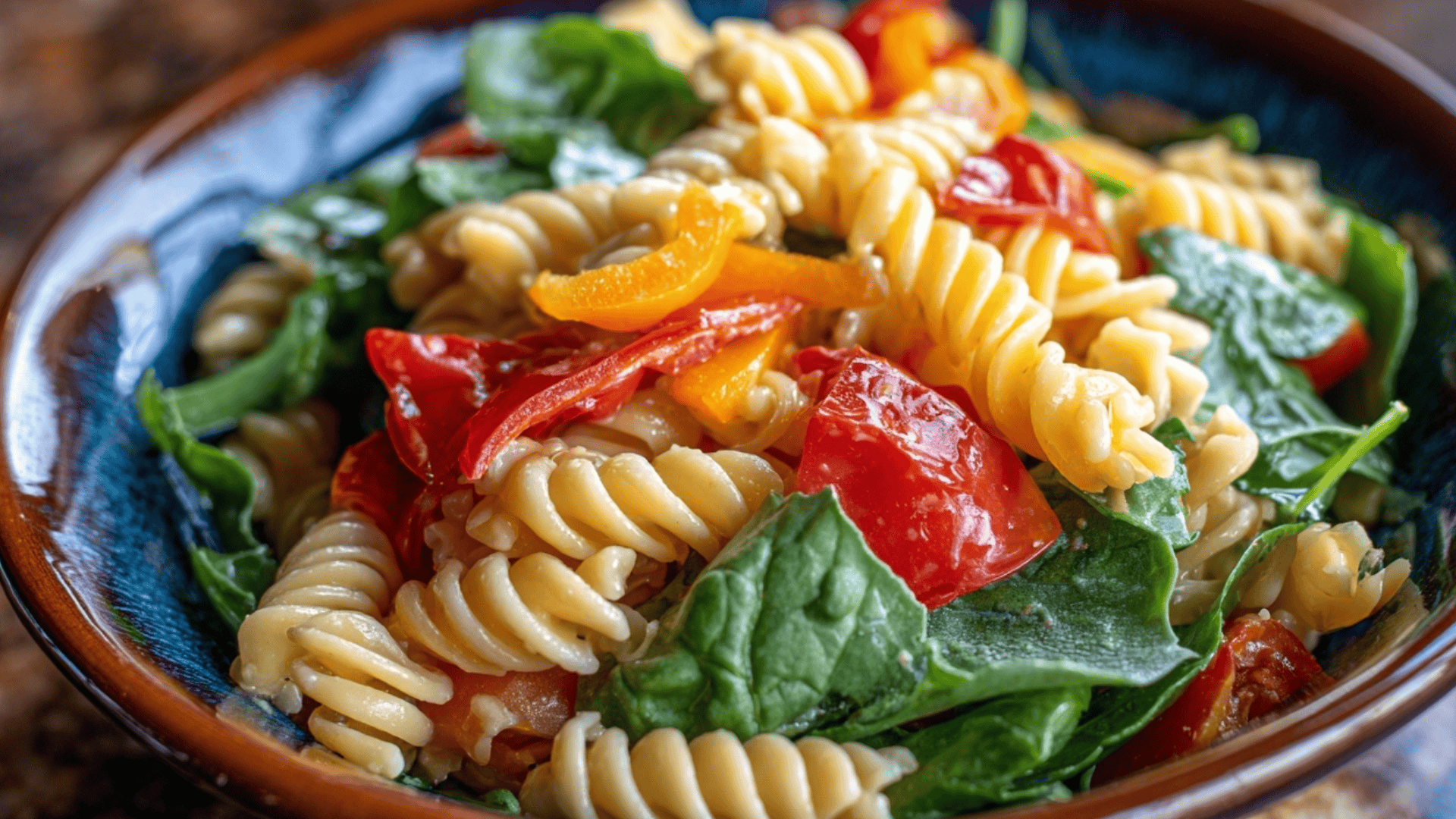
Pasta salad requires a different approach:
- Cook 1 to 2 minutes longer than al dente for a softer texture
- Drain in a colander immediately when done
- Rinse under cold water to stop the cooking process
- Toss with a small amount of olive oil to prevent sticking
- Let cool completely before adding dressing and ingredients
Short shapes work best for salads, such as fusilli, penne, farfalle, rotini, and shells, which all hold dressing well.
Tips for Perfect Every Time
Small changes make a big difference. Follow these quick tips to cook a flavorful, firm, and perfectly coated dish every time.
- Use enough water: Prevents sticking and ensures even cooking
- Don’t add oil: Stir instead so the sauce clings better
- Stir often: Especially during the first two minutes
- Taste test early: Check texture one to two minutes before done
- Save water: Adds starch to thicken and bind the sauce
- Finish in sauce: Simmer together for a rich, restaurant-style flavor
- Never rinse: Keeps the natural starch for better sauce coating
Master these simple habits, and you will always turn out perfectly cooked and delicious.
How to Store Cooked One
For short-term storage, toss cooked pasta with a little olive oil to prevent sticking and keep it in an airtight container in the refrigerator for up to three days.
Reheat by adding it to your sauce or microwaving it with a splash of water.
For longer storage, slightly undercook before freezing it in sealed bags or containers for up to two months.
Thaw overnight and reheat in hot water or sauce. For salad, store it in the fridge and keep the dressing separate until serving.
Wrapping It Up
Perfect comes down to three key elements: proper timing, adequate salt, and frequent stirring.
The difference between a good and a great one is finishing it in the sauce with a splash of starchy cooking water.
Experiment with different sauces, cooking times, and textures to find what you enjoy most. Once you master these techniques, you’ll be able to create consistently delicious dishes at home.
Ready to take your pasta game further? Try making homemade sauces or experimenting with fresh shapes for even more flavor possibilities.
Frequently Asked Questions
How can I keep pasta from sticking after cooking?
Toss it with a little olive oil and stir while cooling to prevent clumping.
What type of salt is best for pasta water?
Use coarse sea salt or kosher salt for a richer flavor and more even seasoning.
Can I cook pasta ahead of time for guests?
Yes, slightly undercook it, toss with oil, and reheat briefly in the sauce before serving.
How do I fix overcooked pasta?
Sauté it in a hot pan with sauce to firm it slightly and add flavor.
What’s the best way to add pasta to the sauce?
Transfer it straight from the pot into warm sauce and mix while still hot.








